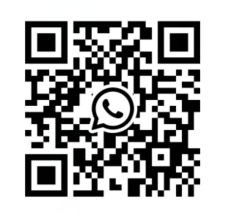1. Overview
Today, with the continuous improvement of the medical system, the degree of hospital information has been greatly improved. Nowadays, large hospitals have used the Hospital Information System (HIS). After the application of the HIS system, it is convenient for the public to seek medical treatment and improve. Medical service level.
However, some problems in the current HIS system cannot be fundamentally solved. For example, when encountering emergencies and facing patients who must be rescued in time, doctors and nurses must first search for the patient’s case, view the patient’s medical history and drug allergy history, etc. Important information is only necessary for timely rescue of the situation, but these will delay the best time to rescue patients.
2. System Highlights
When the hospital adopts the RFID system, these problems will be solved. Every patient in the hospital will wear a wristband that uses RFID technology. The patient's relevant information is stored here, including basic personal information and important information such as drug allergy history. More detailed information can be mapped to the database through the electronic code on the RFID electronic tag.
In the existing HIS system of the hospital, basic information has been entered for each registered patient, but this information is not followed with the patient from time to time. Only the medical staff can find the accurate information of the patient before going to the computer terminal in the office area. Now, through a simple RFID smart wristband, medical staff can grasp the accurate information of each patient anytime, anywhere.
3. Framework and analysis
The hospital's server stores the patient's final complete case. The doctor's RFID handset of each ward can also store the relevant case of the patient in charge. The relevant information on the patient's wristband can be accurately read through the handset and can also be written. Corresponding information, such as: whether the patient is allergic to a certain drug, whether he has received an injection today, whether he has taken a drug today, etc. Monitoring information greatly improves the efficiency of hospital management of patients, RFID technology can completely replace the existing bed Patient information card.
In daily medical activities, we do apply patient identification at all times, including the use of a bedside identification card that records the patient's condition, allowing patients to wear in-patient uniforms, and so on. Hospital staff often use words like "Patient on bed 10, taking medicine" to guide patients to various treatments. Unfortunately, these methods often cause erroneous recognition results and even cause medical accidents. In fact, we have not really used the correct and effective patient identification to reduce medical accidents and improve medical management.
The hospital's clear identification of patients should follow the following three basic principles: provide accurate patient identification, and the identification is accurate and uniform, covering all relevant departments of the hospital; establish a clear correspondence between patients and medical files, various treatment activities; reliable use The logo product ensures that the patient logo will not be exchanged or lost.
4. Benefit analysis
Ø Help doctors or nurses to confirm the identity of patients with communication difficulties.
Ø Monitor and track people who enter the high-risk area without permission to hang out.
Ø When medical emergencies, infectious disease epidemics, terrorist threats and other situations pose a threat to the normal and effective work of the hospital, the RFID system can promote the implementation of restrictive measures to prevent unauthorized medical care, staff and patients from entering and leaving the hospital.
Ø The wristband allows the hospital administrator to encrypt part of the data, so that even if the wristband is lost, it will not be cracked by other people

